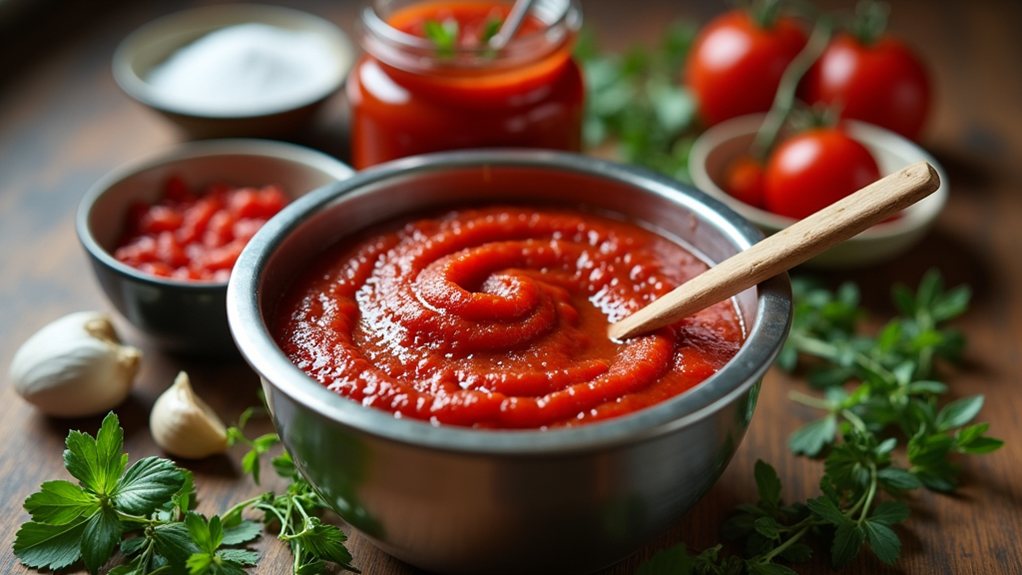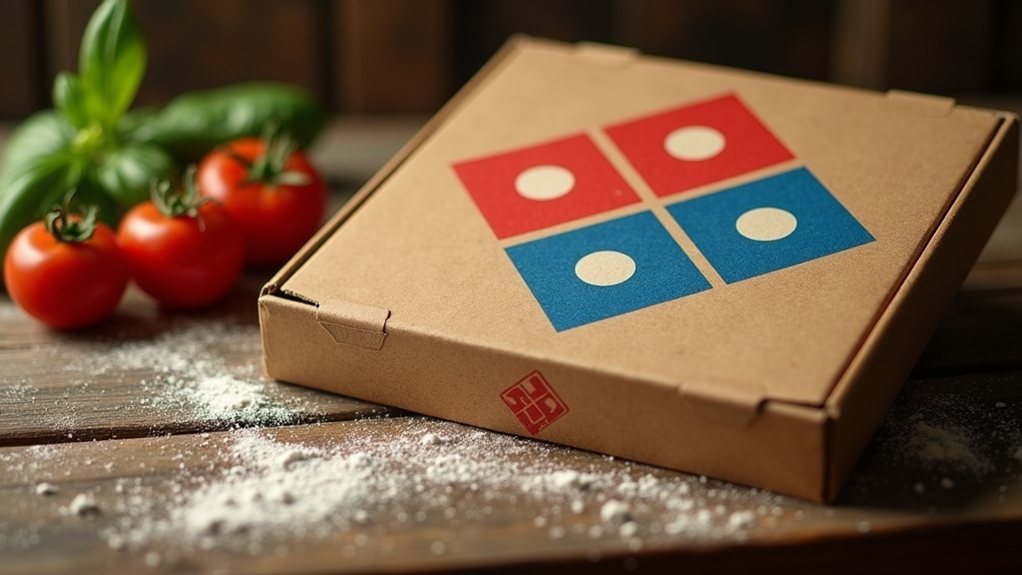Pizza sauce secrets often hide in plain sight, influencing both taste and preparation efficiency in ways customers rarely notice. Major chains employ a surprisingly simple technique—combining tomato paste with crushed tomatoes—to create depth without lengthy cooking times. This concentrated approach delivers consistent flavor while saving valuable kitchen hours, a practice employed across thousands of franchises nationwide. The real trick, however, lies in the precise ratio and supplemental ingredients that transform these basic components into signature sauces consumers crave and competitors struggle to replicate.
The Professional Sauce Shortcut Revolution

Creating a delicious homemade pizza sauce doesn't have to be a time-consuming endeavor, as there are numerous shortcuts that can dramatically reduce preparation time without sacrificing flavor. Many pizza establishments, especially large chains, have developed time-saving techniques that they rarely share with the public, preferring to maintain their competitive edge in the fast-paced food industry.
One of the most closely guarded secrets involves using tomato paste as a base rather than starting from fresh tomatoes. This concentrated product provides an instant rich, deep flavor that would otherwise take hours of simmering to achieve. When combined with crushed tomatoes in the right proportion, the result mimics the consistency and taste of a sauce that's been lovingly prepared for much longer. Fresh ingredients elevate the overall quality and taste of your homemade pizza sauce significantly.
The secret weapon in professional pizza sauce? Tomato paste—delivering hours of flavor development in minutes when expertly combined with crushed tomatoes.
Restaurant professionals often use another little-known trick: they rarely cook their pizza sauce extensively. Contrary to popular belief, overcooking sauce can actually damage the fresh tomato flavor and create unwanted bitterness. Instead, they mix their ingredients cold or warm them only slightly, allowing the sauce to fully develop its flavor profile during the actual pizza baking process. Proper preparation techniques ensure a smooth texture and eliminate any bitter undertones that could affect the final taste.
Adding a pinch of baking soda to counter acidity represents another industry secret that home cooks often miss. This simple addition balances the natural tartness of tomatoes without requiring excessive amounts of sugar, creating a more sophisticated flavor profile that complements diverse toppings.
Many chains also rely on specific herb blends rather than generic Italian seasoning. Fresh oregano, in particular, delivers that authentic pizzeria taste that many home cooks struggle to replicate. Much like the detailed Kubdari recipe found in culinary databases, the best pizza sauce recipes require precise combinations of ingredients and techniques. Combined with properly sautéed (but never browned) garlic, these herbs create the foundation of a standout sauce. Making your own sauce is not only cheaper than store-bought, costing about $3 for enough to top 3-4 pizzas, but also grants you complete control over ingredients and flavor.





